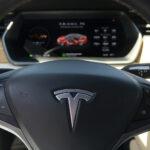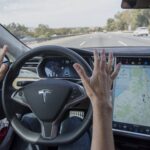Tesla is “trying to turn a nightmare into a dream with Tesla Insurance,” Chief Executive Officer Elon Musk said Wednesday.
His final words during an earnings conference call that lasted more than an hour came as Musk and Chief Financial Officer Zachary Kirkhorn addressed an analyst’s question about profit margins and take-up rates for the insurance program of the electric vehicle manufacturer.
Kirkhorn said it is too early to share any details on the financial results of the insurance program. Instead, he focused his remarks on national and global expansion plans and the idea that Tesla Insurance is making U.S. roads safer where it’s available today. Then Musk chimed in with remarks about how Tesla improves the claims handling experience for customers.
Kirkhorn said that Tesla expects to be the largest insurer of Teslas in the state of Texas by the end of the year. In addition to expanding its “real-time insurance” offering into Virginia, Colorado and Oregon this week, Tesla Insurance is working toward a goal of giving 80 percent of U.S. customers access to a Tesla Insurance product by the end of 2022, he added.
After that, “we’ll pivot our attention to expansion outside of the U.S.,” the CFO said.
Currently, Tesla Insurance is available in eight states, including the three added this week.
“With these three new states, the model is different because we are now the underwriter, and we are also now holding the risk,” Kirkhorn said, contrasting an MGA model. In those states, “we are a fully vertically integrated provider of insurance from systems and financials,” he said.
Referring to other states, Kirkhorn said, “Texas is our longest-standing real-time insurance market.”
California is among the eight states where Tesla Insurance is available, but policies issued in California do not include real-time driving behavior in the calculation of insurance premiums. (Related Insurance Journal article, “Tesla’s Musk Tweets Off on California Regulator Lara Over Car Insurance“)
It’s the real-time element of the premium calculation that had Kirkhorn and Musk talking about “passions” and “dreams,” which transcend top- and bottom-line results of the insurance operations.
“This has become a real passion program for us… It’s bigger than just the economics. We’re trying to do a good thing here for our customers, save people money and make the roads a little bit safer,” Kirkhorn said, after noting some social media buzz from customers in Virginia, Colorado and Oregon who say they saved money by switching to Tesla Insurance.
“Having real-time feedback for driving habits is actually resulting in Tesla owners driving the cars in a safer way,” Musk asserted. “They get real-time feedback on, OK, this is affecting my insurance rate or it isn’t. And so, when people see it—they can see a real-time score—they realize, oh, if I make the following changes in my driving habits, then I pay less in insurance,” he said referring to a “real-time feedback loop for driving” and the incentive for safer driving that the pricing model creates.
There is not just a feedback loop for drivers but for Tesla as well “because we see if there is a crash, large or small…exactly what that cost. And then we think about how can we change the design of the car or the software in order to minimize the probability of that accident.”
“Most accidents are minor, but how do you have those accidents occur less frequently?” he continued. “And how do we make the repair associated with that accident super fast?”
“Aspirationally, it would be like a same-day repair of a collision, which is a night-and-day difference compared to sometimes having to wait for a month while insurance claims are settled and figured out, because Tesla is also doing collision repair,” Musk said.
“It improves just overall macroeconomic efficiency,” he said.
Kirkhorn explained: “We do claims management in-house. And so, we receive the notification that there’s an accident; we work to prepare the estimate. Then we can, with the support of our customers, use our collision centers to do the repair.”
“So, it’s full end-to-end visibility. And [with] all of that, to Elon’s point, we can then identify areas of cost inefficiency, feed those back to our engineering [and] software teams [to] actually improve the product,” he said, referring to Tesla cars. “This lowers the cost of insurance, improves reliability of the product. So, it’s a full circle.”
Added Musk, “Basically, the customer experience is just vastly better because if there’s an accident, there’s no argument. We’ll repair it immediately. And this is as compared to arguing with an insurance company and then a claims adjuster and then a collision repair center.”
“This can be a nightmare basically. So, we’re trying to turn a nightmare into a dream with Tesla Insurance,” he said.






















 Slideshow: Carrier Management’s 2025 Top Editor’s Picks (Unlocked)
Slideshow: Carrier Management’s 2025 Top Editor’s Picks (Unlocked)  Northern California Flooding This Weekend Caused by Heavy Rain, High Tides
Northern California Flooding This Weekend Caused by Heavy Rain, High Tides  Breaking: Andersen to Replace Zaffino as CEO of AIG on June 1
Breaking: Andersen to Replace Zaffino as CEO of AIG on June 1  Executives on the Move at Liberty Mutual, Cowbell, W. R. Berkley
Executives on the Move at Liberty Mutual, Cowbell, W. R. Berkley 















